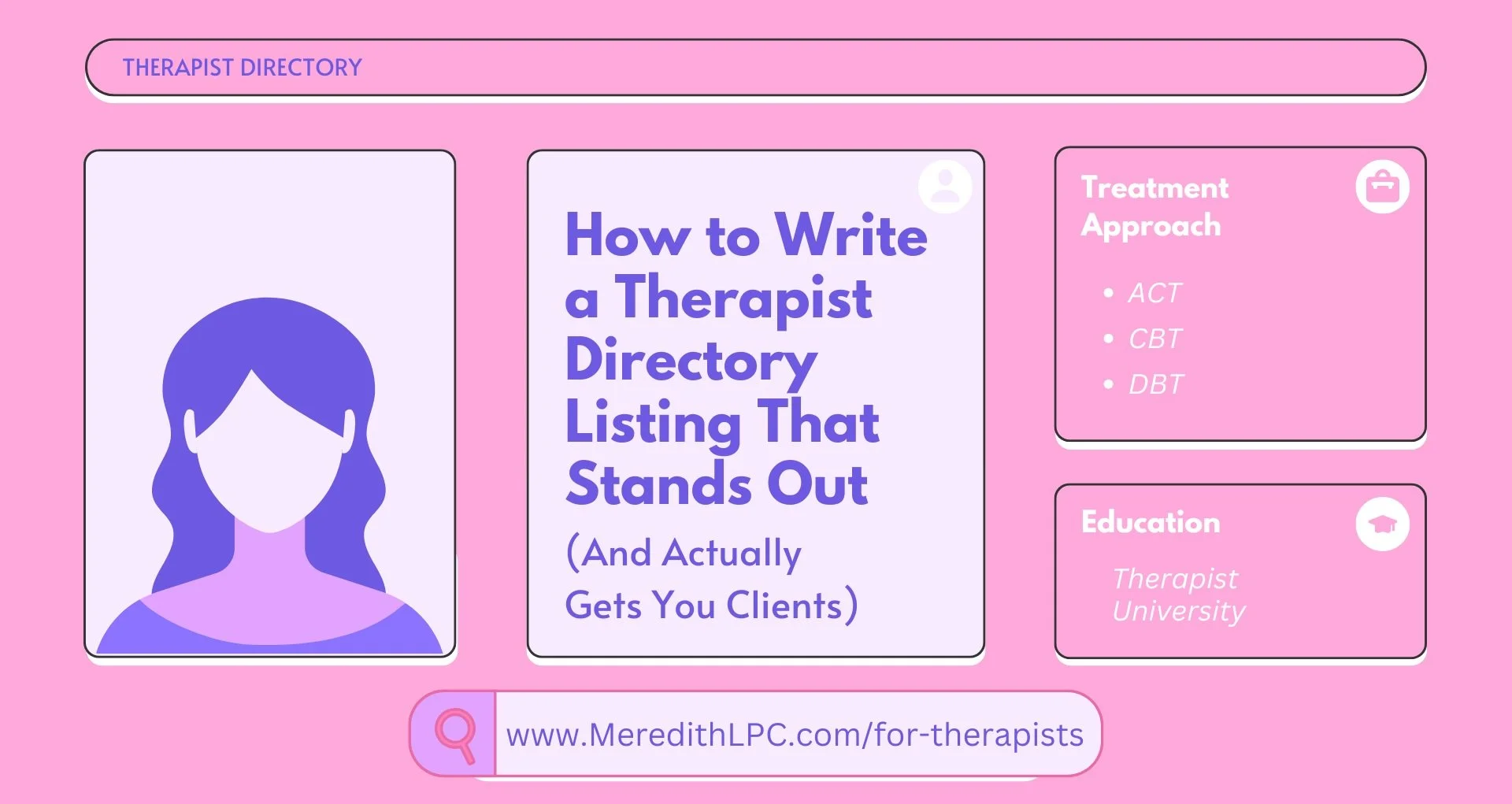Pride Month: Is Your Practice LGBTQIA+ Affirming—or Just Inclusive on Paper?
June is Pride Month, which means we’re seeing rainbow flags, celebratory posts, and reminders to “support the LGBTQIA+ community.” But as therapists—especially those of us who are straight and cisgender—it’s worth asking:
Is my practice genuinely affirming, or just inclusive on paper?
In this post, I want to reflect on what affirming care really looks like in a therapy practice—not just on your website or intake forms, but in the space you hold, the assumptions you challenge, and the clients you serve. This is not about perfection—it’s about being intentional and continually evolving.
🏳️🌈 What Does “Affirming” Actually Mean?
Affirming care goes beyond tolerance or neutrality. It’s not just saying, “I work with everyone.” It’s about creating a space where LGBTQIA+ clients are not only safe—but also seen, respected, and understood.
An affirming therapist:
Uses inclusive and correct language around gender and sexuality
Understands the impact of minority stress and systemic oppression
Avoids assumptions about identity, relationships, or family structures
Seeks ongoing education, feedback, and self-awareness
Knows when to consult, refer, or get support to better serve LGBTQIA+ clients
Affirming care also means celebrating clients’ identities as strengths—not pathologizing them, minimizing them, or tiptoeing around them.
🤔 “Inclusive on Paper” vs. Actually Affirming
A lot of well-meaning therapists unintentionally fall into the “inclusive on paper” category. You might be here if:
Your paperwork still uses binary gender language
You assume clients’ pronouns or relationship roles
You say you’re welcoming, but it’s not reflected in your materials or intake process
You haven’t had LGBTQIA+ clients yet and haven’t actively worked to learn more
You feel unsure how to bring up identity in a session, so you avoid it
None of this makes you a bad therapist—but it does mean there’s room to grow. And Pride Month is the perfect time to do that reflection.
🧠 Why Affirming Care Matters for Clinical Work
Clients bring their whole selves to therapy. When we unintentionally exclude or overlook a core part of who someone is—whether that’s their gender identity, sexuality, or lived experience—we risk reinforcing the exact shame or invisibility they’re trying to heal from.
Research shows that LGBTQIA+ clients experience:
Higher rates of anxiety, depression, and trauma symptoms
More frequent experiences of discrimination in healthcare settings
Lower levels of trust in providers who aren’t explicitly affirming
Being affirming isn’t “extra credit.” It’s part of being trauma-informed, culturally responsive, and client-centered.
✅ A Quick Affirming-Care Self-Audit
Here are a few areas you can reflect on or adjust:
1. Intake Forms & Paperwork
Do you ask for pronouns in a respectful, open-ended way?
Is your gender field multiple choice—or a blank line?
Do you assume legal names and gender markers match identity?
2. Language in Session
Do you mirror the language your clients use for themselves?
Are you comfortable naming and exploring identity-related concerns?
Do you ask curious, respectful questions instead of assuming?
3. Office (or Telehealth) Environment
Is your space welcoming to people of all identities?
Do books, art, or visible materials signal that this is a safe space?
Have you examined how your own identities might shape the dynamic?
4. Education & Supervision
Have you taken courses or read content by LGBTQIA+ clinicians?
Do you have colleagues you can consult with on identity-related topics?
Are you open to feedback from clients and colleagues alike?
🙋🏼 Why This Matters to Me, Personally
I’m a straight, cisgender therapist. That means I don’t share the lived experience of LGBTQIA+ clients. But I care deeply about showing up in affirming, humble, and thoughtful ways—and I believe it's my responsibility to do the work of learning and unlearning, not my clients’ job to educate me.
I also consult with other therapists building their practices. One of the most meaningful things we can do—both clinically and ethically—is ensure we’re not just checking boxes, but truly holding space for clients to be who they are without fear, shame, or erasure.
💡 Small Changes That Can Make a Big Difference
You don’t have to overhaul everything at once. Here are a few simple, actionable steps you can take this month:
Add pronouns to your email signature and Zoom/video name
Revisit your intake paperwork and replace binary questions
Reflect on your own assumptions and language habits
Follow and learn from LGBTQIA+ therapists and educators
Ask trusted colleagues for feedback on how your practice comes across
Sign up for an LGBTQIA+ continuing education course
🌱 Affirming Care is Ongoing Work
There’s no finish line when it comes to building an affirming practice. We’ll always have blind spots—and we’ll always have opportunities to grow.
If you’re a therapist who wants to feel more confident and intentional in this area, or if you’re reflecting on ways to better serve your clients during Pride and beyond, know that you’re not alone in the work. And the work is worth doing.
🤝 Need Support in Building a More Affirming Practice?
If you’re a therapist who wants to deepen your practice—not just in theory but in real, tangible ways—I’d love to support you. Whether it’s refining your paperwork, exploring values-based marketing, or building confidence around inclusivity, you don’t have to figure it out alone.
👉 Reach out to book a consultation—I’m here to help you build a practice that reflects both your values and your care for every client who walks through your door.
Related Articles: 10 Simple Ways to Make Your Private Practice More Environmentally Sustainable
How to Start a Private Practice Without Feeling Overwhelmed
HIPAA Compliance in a Digital World: What Therapists Need to Know


